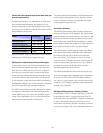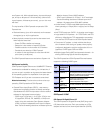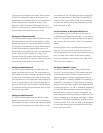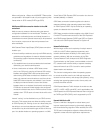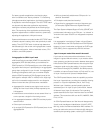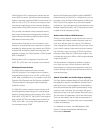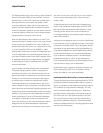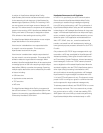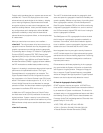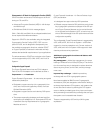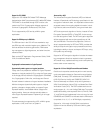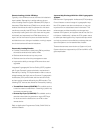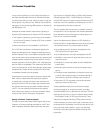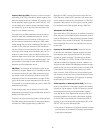A solution is HiperSockets Multiple Write Facility.
HiperSockets performance has been enhanced to allow
for the streaming of bulk data over a HiperSockets link
between logical partitions (LPARs). The receiving LPAR
can now process a much larger amount of data per I/O
interrupt. This enhancement is transparent to the operating
system in the receiving LPAR. HiperSockets Multiple Write
Facility, with fewer I/O interrupts, is designed to reduce
CPU utilization of the sending and receiving LPAR.
The HiperSockets Multiple Write solution moves multiple
output data buffers in one write operation.
If the function is disabled then one output data buffer
is moved in one write operation. This is also how
HiperSockets functioned in the past.
If the function is enabled then multiple output data buf-
fers are moved in one write operation. This reduces CPU
utilization related to large outbound messages. When
enabled, HiperSockets Multiple Write will be used anytime
a message spans an IQD frame requiring multiple output
data buffers (SBALs) to transfer the message. Spanning
multiple output data buffers can be affected by a number
of factors including:
• IQD frame size
• Application socket send size
• TCP send size
• MTU size
The HiperSockets Multiple Write Facility is supported in
the z/OS environment. For a complete description of the
System z10 connectivity capabilities refer to IBM System z
Connectivity Handbook, SG24-5444.
HiperSockets Enhancement for zIIP Exploitation
In z/OS V1.10, specifi cally, the z/OS Communications
Server allows the HiperSockets Multiple Write Facility
processing for outbound large messages originating
from z/OS to be performed on a zIIP. The combination of
HiperSockets Multiple Write Facility and zIIP enablement
is described as “zIIP-Assisted HiperSockets for large mes-
sages.” zIIP-Assisted HiperSockets can help make highly
secure, available, virtual HiperSockets networking a more
attractive option. z/OS application workloads based on
XML, HTTP, SOAP, Java, etc., as well as traditional fi le
transfer, can benefi t from zIIP enablement by helping to
lower general purpose processor utilization for such TCP/
IP traffi c.
Only outbound z/OS TCP/IP large messages which origi-
nate within a z/OS host are eligible for HiperSockets zIIP-
Assisted processing. Other types of network traffi c such
as IP forwarding, Sysplex Distributor, inbound processing,
small messages, or other non TCP/IP network protocols
are not eligible for zIIP-Assisted HiperSockets. When the
workload is eligible, then the TCP/IP HiperSockets device
driver layer (write) processing is redirected to a zIIP,
which will unblock the sending application. zIIP-Assisted
HiperSockets for large messages is available with z/OS
V1.10 with PTF and System z10 only. This feature is unsup-
ported if z/OS is running as a guest in a z/VM environment
and is supported for large outbound messages only.
To estimate potential offl oad, use PROJECTCPU for current
and existing workloads. This is accurate and very simple,
but you have to be on z/OS 1.10 with the enabling PTFs
AND System z10 server AND you need to be performing
HiperSockets Multiple Write workload already on z/OS.
33



